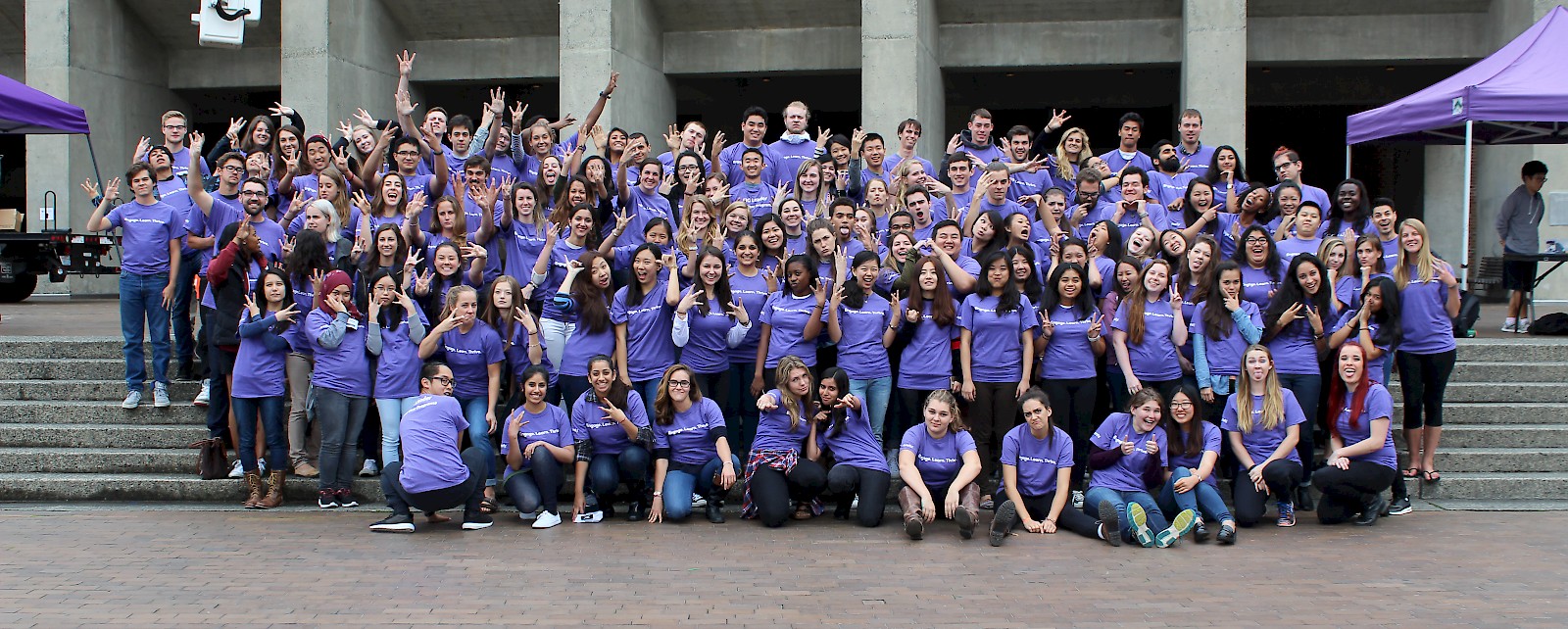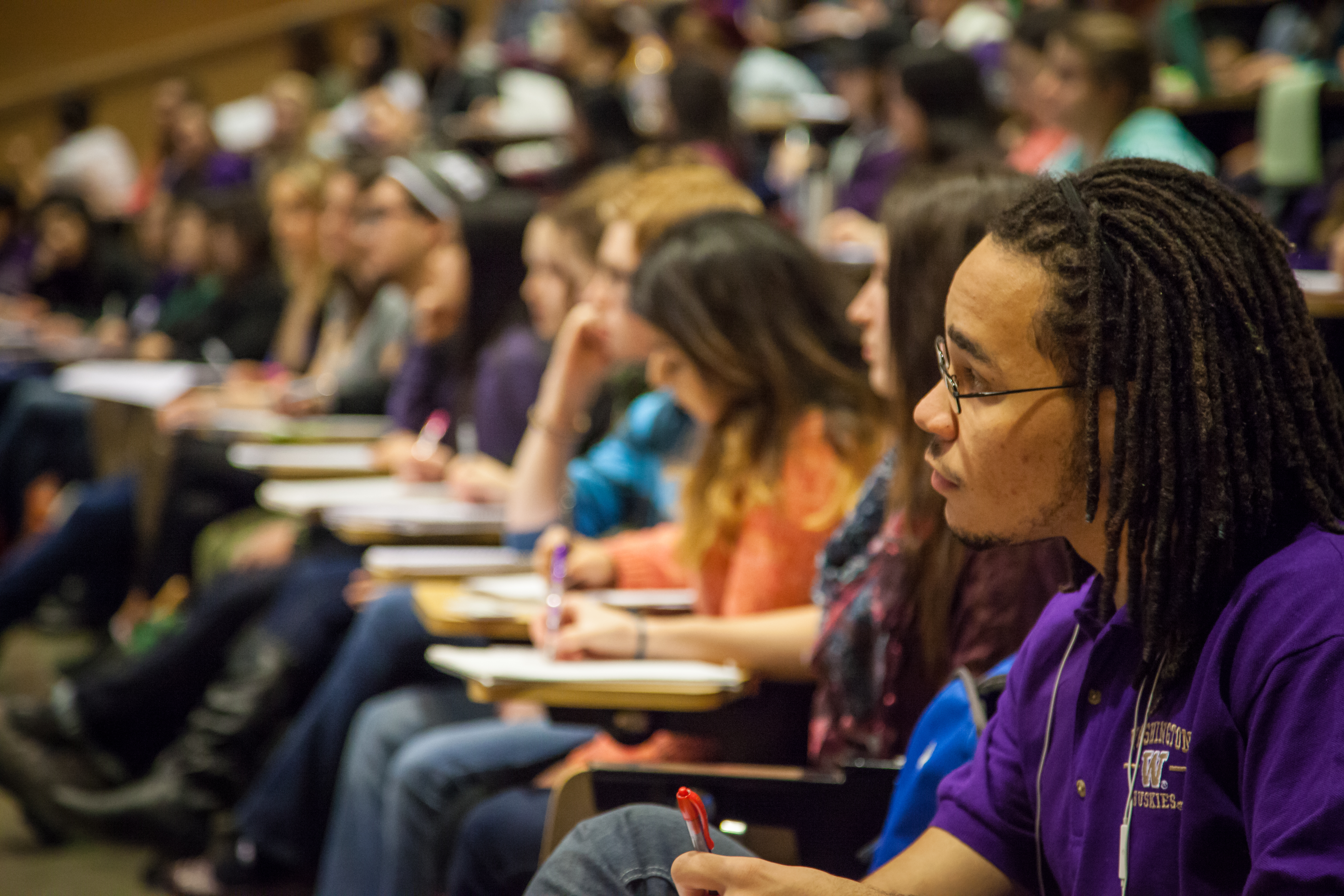Making Friends. Building Academic Community. Finding Mentors.
The FIG program began in 1987 as a means of creating small, intentional learning communities within the large university setting. Since their inception 30 years ago, FIGs have linked clusters of courses to seminars facilitated by peer instructors. The number of FIGs increased steadily from 1987, when 4 clusters were offered, to today with over 150 clusters offered. As we study the effects of the FIG program on student persistence and retention rates, we can report that FIG students return for their second year and graduate at higher rates than students who were not in a FIG.
FIG Research & Reports
“It was a such a friendly way to start my college life.”
—2016 FIG Student
FIGs are centered around GEN ST 199, a two-credit seminar taught by an upperclass student called a FIG Leader. Students can pick from a variety of FIGs that may or may not include 2–3 other courses. Students find FIGs valuable in making friends and learning about campus resources.
GEN ST 199 COURSE ASSIGNMENTS



Identify potential majors, plan course sequences for them, attend a related campus activity, write and reflect.
Connect with a UW alumnus or other individual who is currently working or has worked in a career you want to learn more about.
Explore a Seattle neighborhood and use UW Library resources to research issues of population health that affect residents in the area. Topics may include: affordable housing, business and industry, development and changing demographics, homelessness and homeless encampments, minority/ethnic populations and their culture, public art, public parks and green spaces, transportation and urban planning.

Non-FIGs: 90.9%
FIGs: 94.1%
Non-FIGs: 75%
FIGs: 81.5%
Pending publishing. L Aulck, J Mathers, C Lee, G Mancinelli, A Lau, M Sun, J West. Target journal: AERA Open.
“Having to complete these projects gave me a more concrete sense of what I want to accomplish in the coming few years.”
—2016 FIG Student

90% of students say their FIG leader is “open and approachable,” “provided useful guidance,” and “knew a lot about the UW.”
—2016 FIG Student Experience Summary
FIG Leaders take a 10-week training course prior to teaching their GEN ST 199 course where they design twelve unique lesson plans. Topics include time management, finances, academic preparation, diversity and inclusion, library resources and health and wellness.
FIG leaders have a wide variety of majors, representing nine different colleges/schools on campus, with the most popular majors being Biology, Business Administration, Communication, Informatics and Public Health.

“I loved being able to help students adapt to their first year at UW in the best way possible.” —2017 FIG Leader
Pending publishing, L. Aulck, J. Mathers, C. Lee, G. Mancinelli, A. Lau, M. Sun, J. West. Target journal: AERA Open.
While FIG enrollment significantly increased the re-enrollment and graduation percentages for all under-represented students, the highest gains were seen among Hispanic students with a nearly 6% increase in second year re-enrollment and a 8% increase in graduation rates.


First-year Interest Groups Celebrate 30 Years of Shaping Student Experience

120 Mary Gates Hall Box 352825
Seattle, WA 98195-2825
Mary Gates Hall 120
Academic Year: Mon-Fri 8:30 a.m.– 4:30 p.m.
Summer: Mon-Thurs 7:30 a.m.– 4:30 p.m., Fri 8 a.m.–12 p.m.
Winter Break: Mon-Fri 8:30 a.m.–12:00 p.m.
Commuter and Transfer Commons (HUB 141)
Academic Year: Mon-Fri 8 a.m.–5 p.m.
Breaks & Summers: Closed
Closed during University holidays.
206-543-4905 (Voice)
206-207-5564 (Text)
Provide FYP with anonymous feedback about our programs.
Submit here
First Year Programs fosters a successful undergraduate student experience through strategic programming that focuses on positive academic transitions and the development of learning communities. Through partnerships with faculty, staff, alumni, and student leaders our programs create the space for students to define how they will engage, learn, and thrive at the University of Washington.
